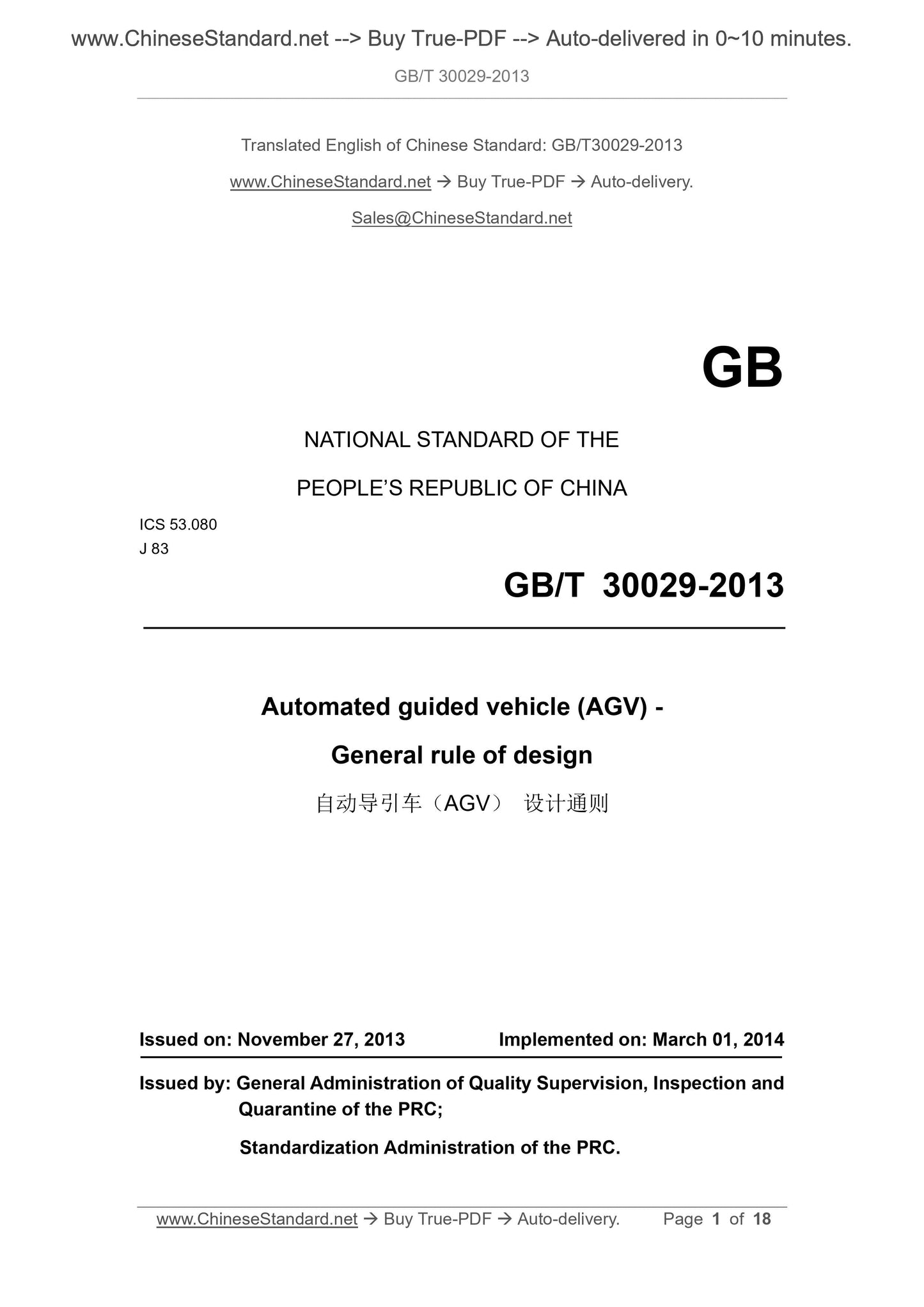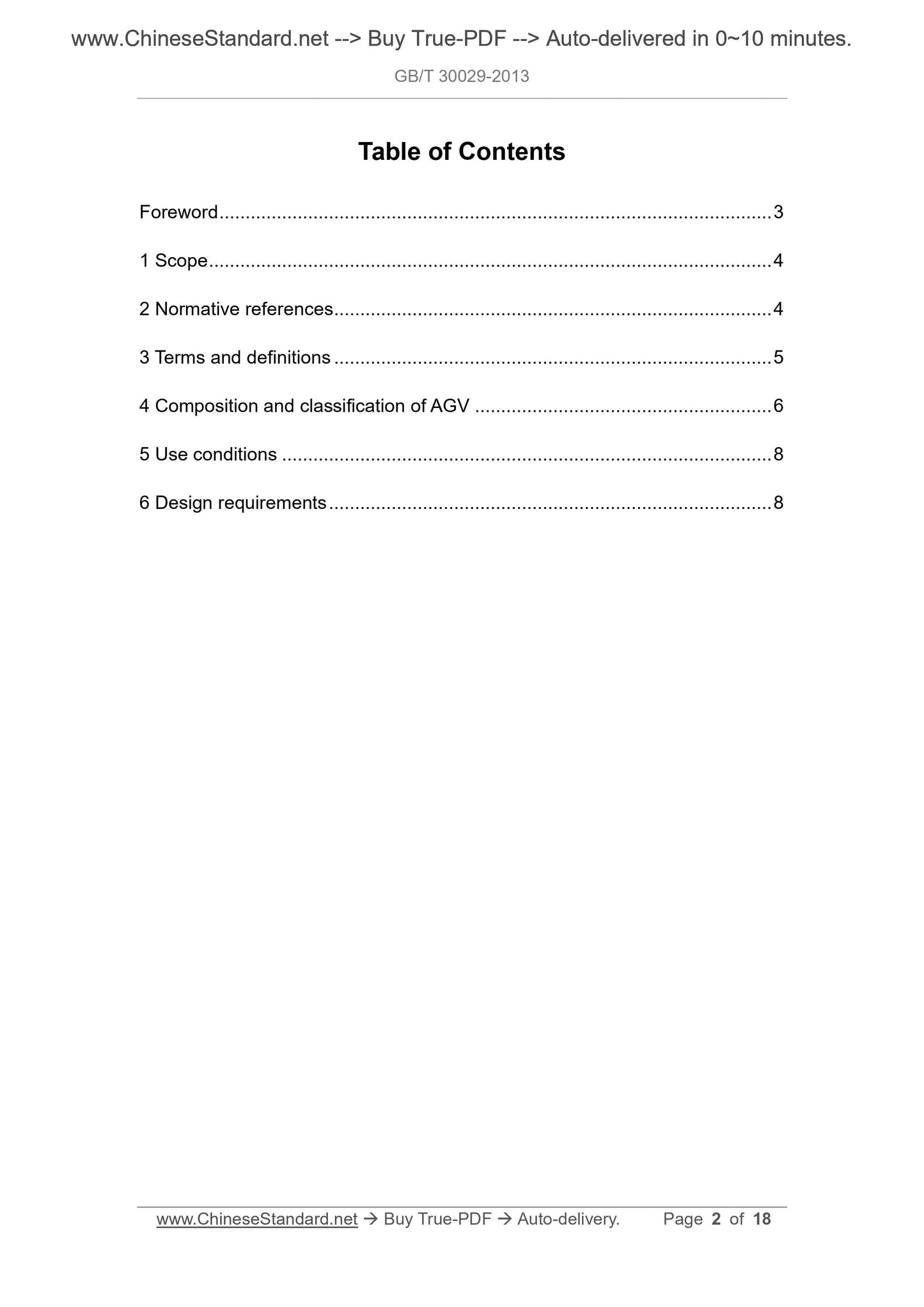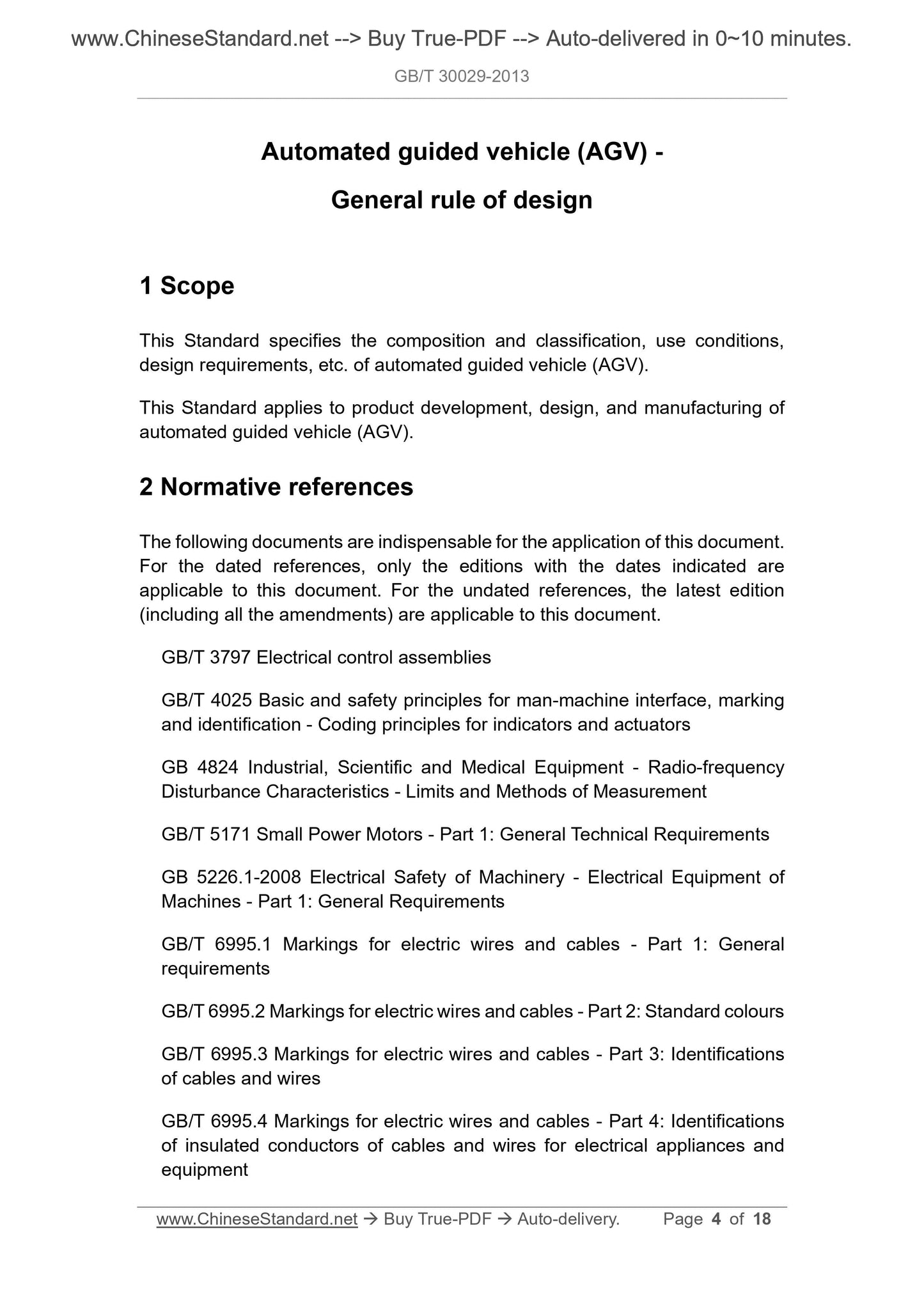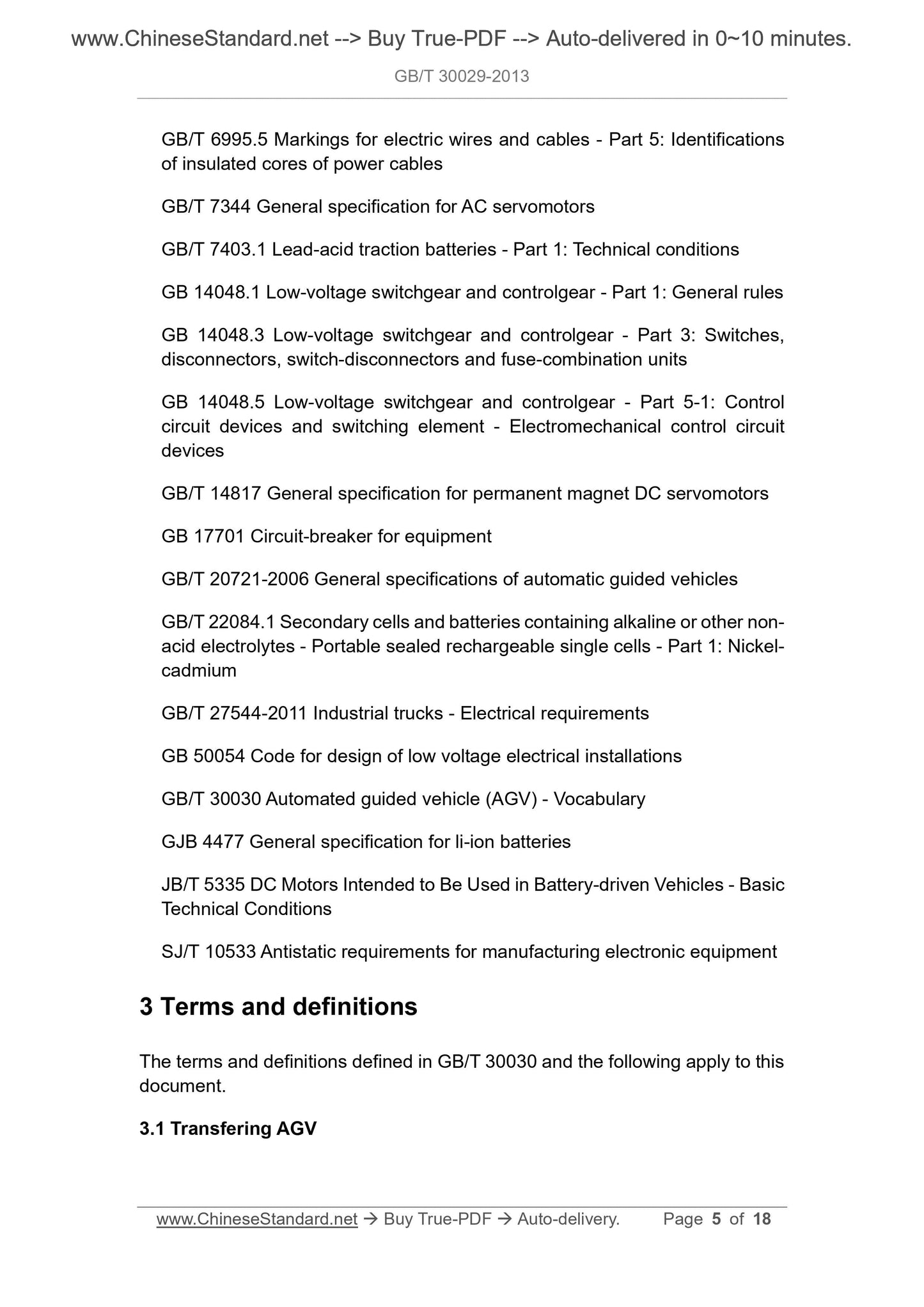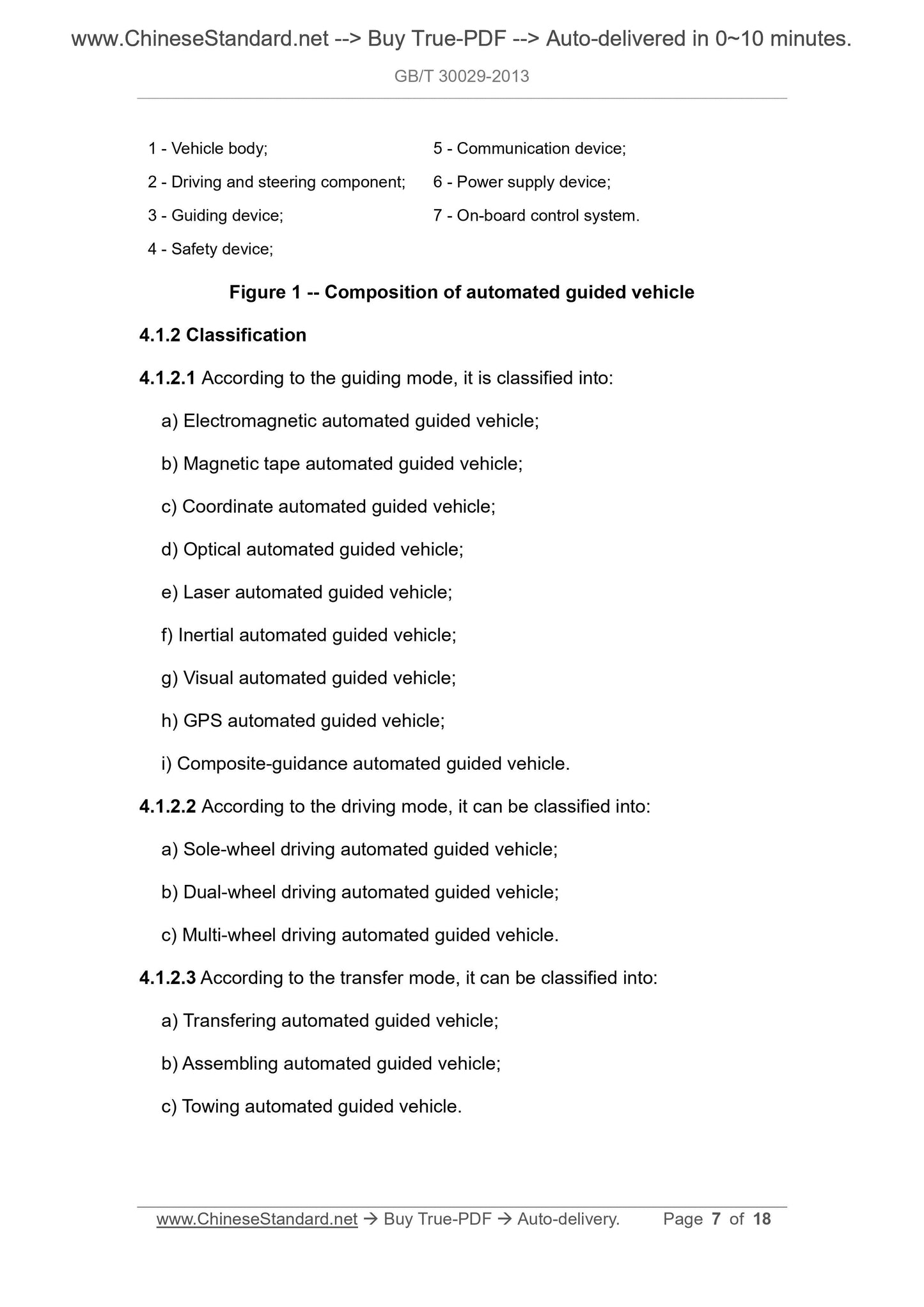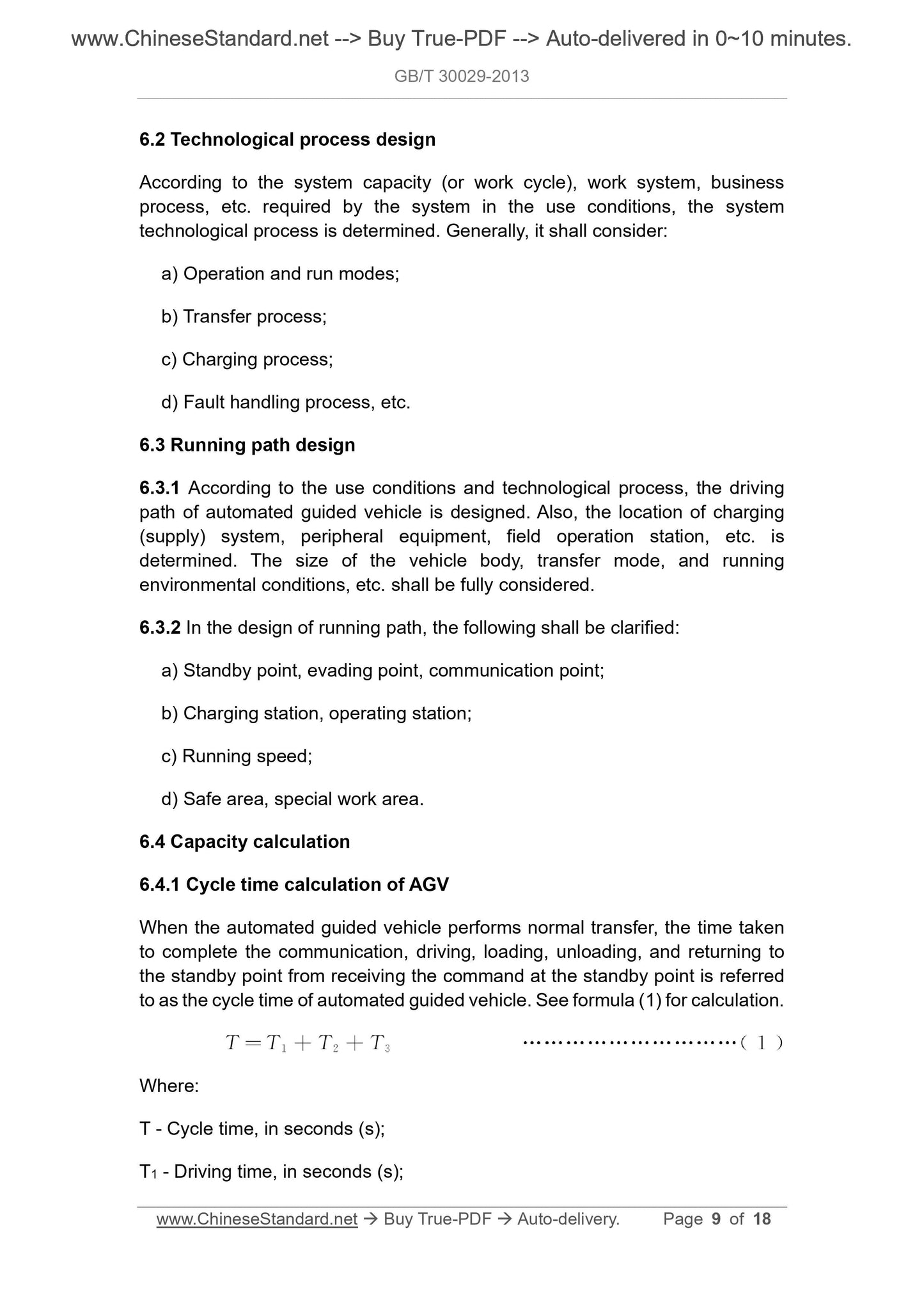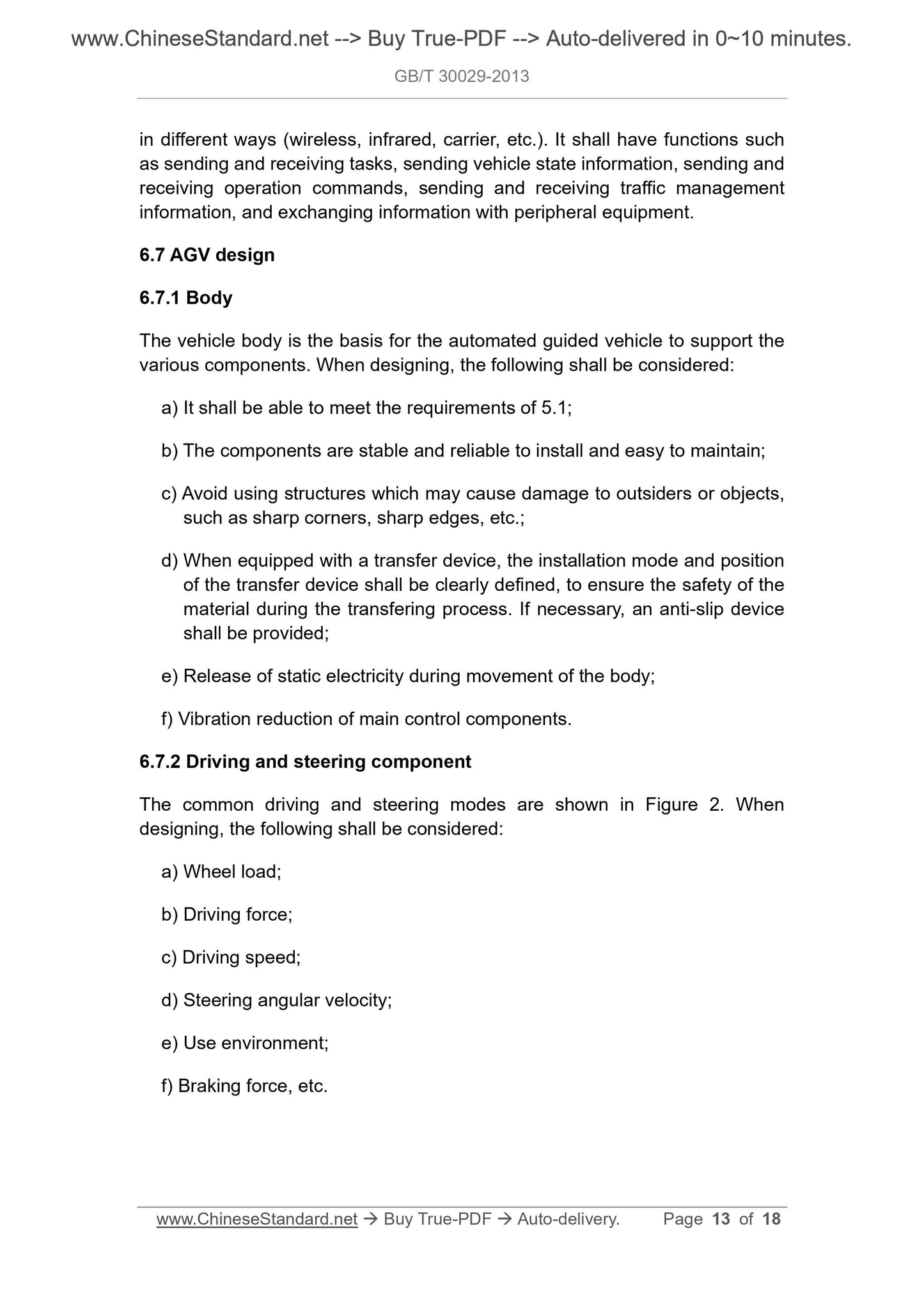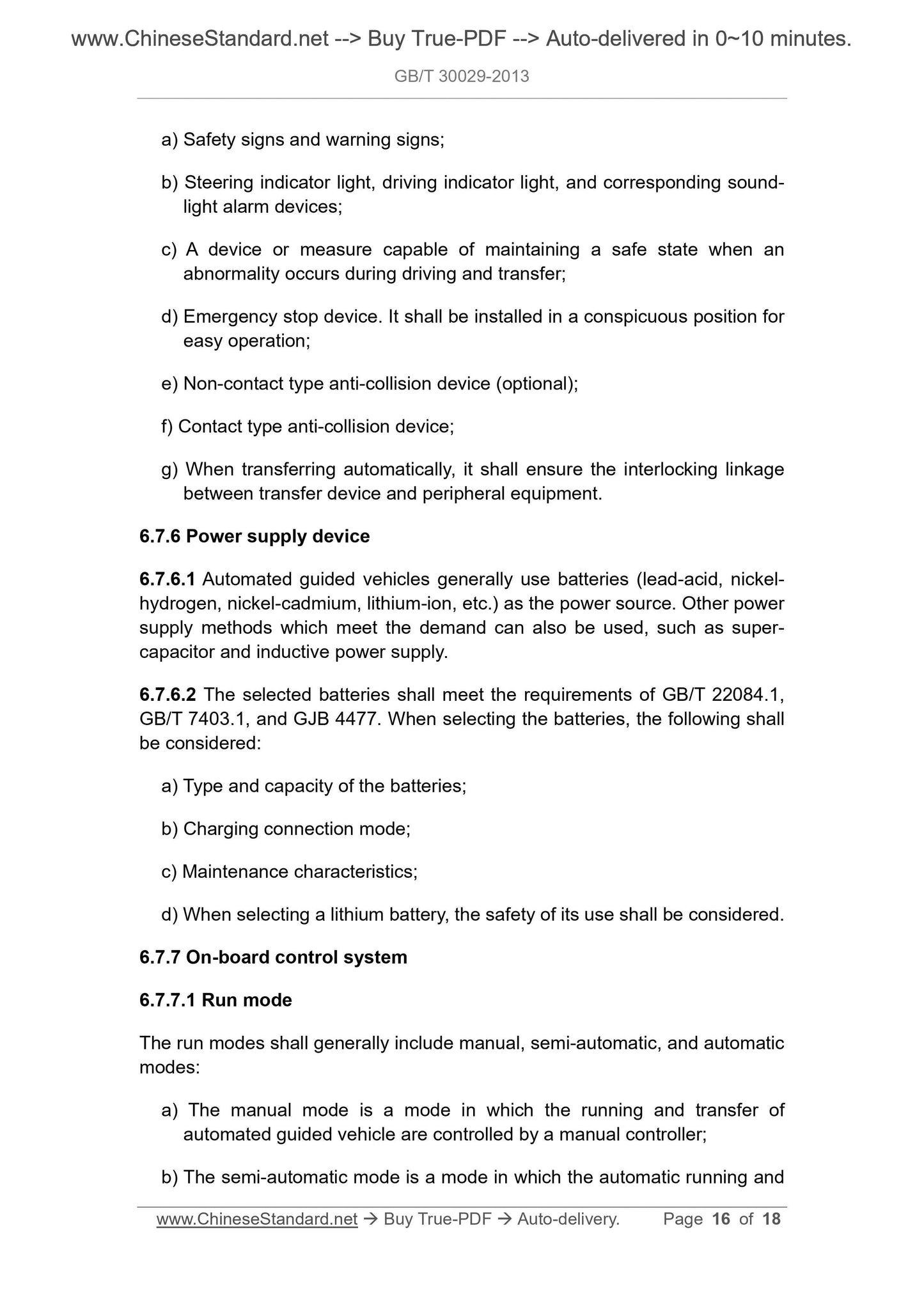1
/
of
8
PayPal, credit cards. Download editable-PDF and invoice in 1 second!
GB/T 30029-2013 English PDF (GB/T30029-2013)
GB/T 30029-2013 English PDF (GB/T30029-2013)
Regular price
$125.00
Regular price
Sale price
$125.00
Unit price
/
per
Shipping calculated at checkout.
Couldn't load pickup availability
GB/T 30029-2013: Automated guided vehicle (AGV) -- General rule of design
Delivery: 9 seconds. Download (and Email) true-PDF + Invoice.Get Quotation: Click GB/T 30029-2013 (Self-service in 1-minute)
Newer / historical versions: GB/T 30029-2013
Preview True-PDF
Scope
This Standard specifies the composition and classification, use conditions,design requirements, etc. of automated guided vehicle (AGV).
This Standard applies to product development, design, and manufacturing of
automated guided vehicle (AGV).
Basic Data
| Standard ID | GB/T 30029-2013 (GB/T30029-2013) |
| Description (Translated English) | Automated guided vehicle (AGV) -- General rule of design |
| Sector / Industry | National Standard (Recommended) |
| Classification of Chinese Standard | J83 |
| Classification of International Standard | 53.080 |
| Word Count Estimation | 12,145 |
| Quoted Standard | GB/T 3797; GB/T 4025; GB 4824; GB/T 5171; GB 5226.1-2008; GB/T 6995.1; GB/T 6995.2; GB/T 6995.3; GB/T 6995.4; GB/T 6995.5; GB/T 7344; GB/T 7403.1; GB 14048.1; GB 14048.3; GB 14048.5; GB/T 14817; GB 17701; GB/T 20721-2006; GB/T 22084.1; GB/T 27544-2011; GB |
| Regulation (derived from) | National Standards Bulletin 2013 No. 23 |
| Issuing agency(ies) | General Administration of Quality Supervision, Inspection and Quarantine of the People's Republic of China, Standardization Administration of the People's Republic of China |
| Summary | This standard specifies: Automatic Guided Vehicle (AGV) composition and classification, conditions of use, the design requirements. This standard applies to: Automatic Guided Vehicle (AGV) product development, design and manufacturing. |
Share
